The U.S. labor market had a solid ending to 2024, adding 256,000 net new jobs. For the full insights, read more below or watch Chief Economist Andrew Flowers’ takeaways:
A solid end to 2024, now onto 2025
The U.S. labor market added a solid 256,000 net new jobs in December, rounding out a strong year. Despite some wobbles in the summer, average monthly job growth stood at 186,000 at the end of the year.
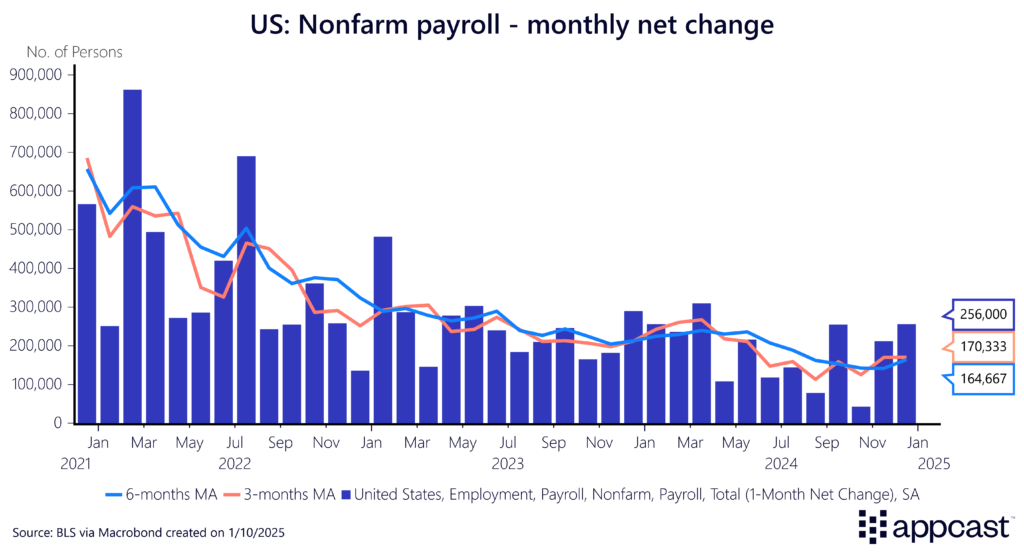
Beneath the shiny surface, there are some signs of concern. Job growth was concentrated in just a few industries for much of the year, lending credence to the white-collar recession narrative. However, in December, gains were much more broad-based, with retail, leisure and hospitality, and professional and business services marking gains.
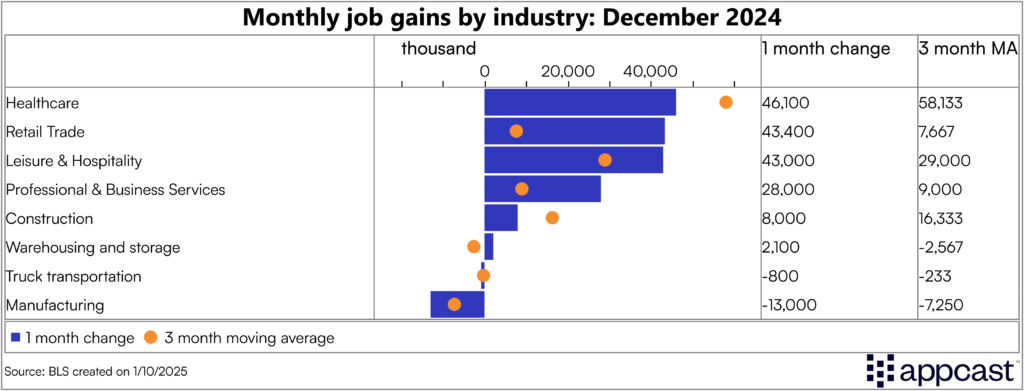
Additionally, worker churn is incredibly low, a sign of low confidence in the market. Plus, job seekers are having an increasingly difficult time finding a position.
But, despite the downsides, the economy is in a relatively strong position as a new year dawns: job growth is strong, unemployment is low, and the threat of inflation is receding. So, what’s next? The new Trump administration takes office in 10 days, but it remains unclear how the proposed policies will impact the labor market in 2025.
A Strong Market for Job Holders
For those already employed, the labor market remains a source of stability. Wage growth is robust, layoffs are rare, and participation rates are near record highs.
The labor force participation rate—a measure of workers either employed or actively seeking work—is near an all-time high, reflecting strong engagement of job seekers with the economy. Even better, for those currently working, wage growth continues to outpace inflation, hovering between 3.5% and 4%. While not extraordinary, these consistent raises are higher than pre-pandemic levels, offering workers a steady boost in real earnings.
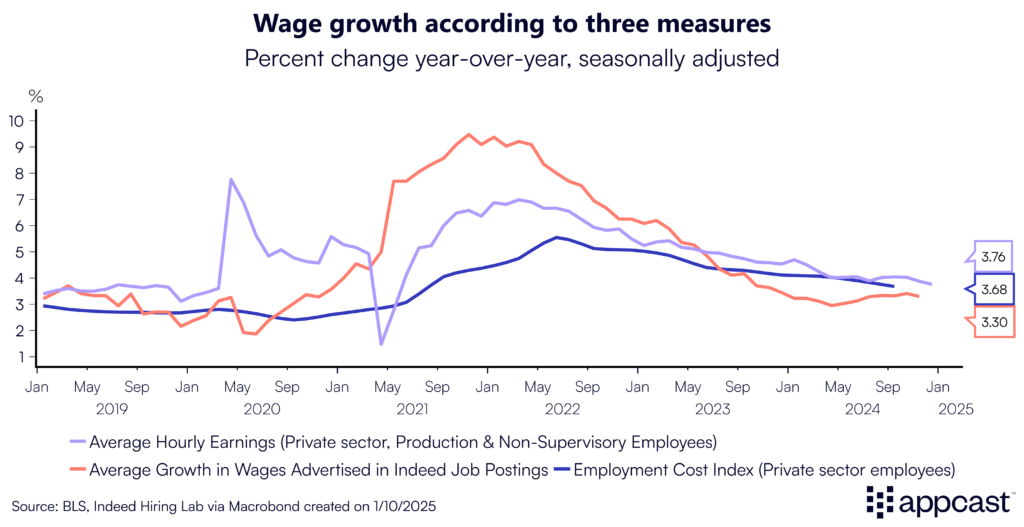
Moreover, job security is exceptionally high. According to the Job Openings and Labor Turnover Survey (JOLTS), the layoff rate is near historic lows, giving employed workers additional peace of mind in an otherwise uncertain economic environment. For now, the labor market offers a steady foundation for those already in it.
A Tough Market for Job Seekers
If you’re trying to break into the labor market, the odds stacked against you are much higher than two years ago. The “job finding” rate—how often unemployed workers land jobs—has taken a steep dive, now sitting over six percentage points below its pre-pandemic peak. For job seekers, finding opportunities has become significantly harder.
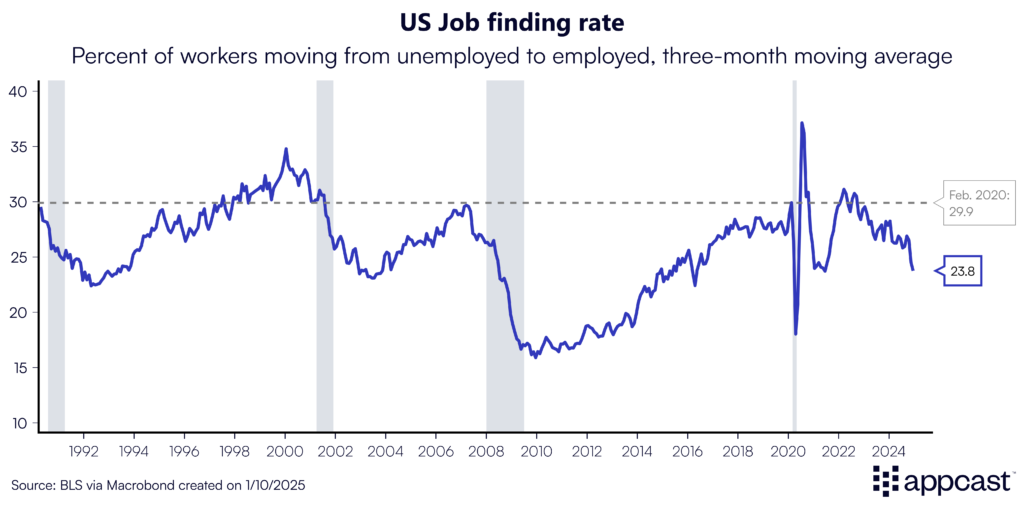
Why? One reason is the lack of churn in the labor market. Quitting rates are the lowest in more than ten years, meaning fewer positions are opening as backfills for those that leave. This reduction in churn is compounded by a decline in new job openings, which has dragged down the hiring rate lower as well.
The result? A labor market that feels stuck in neutral, neither expanding nor contracting, and offering fewer chances for job seekers to break in. It’s a static environment that makes an already challenging job search more frustrating.
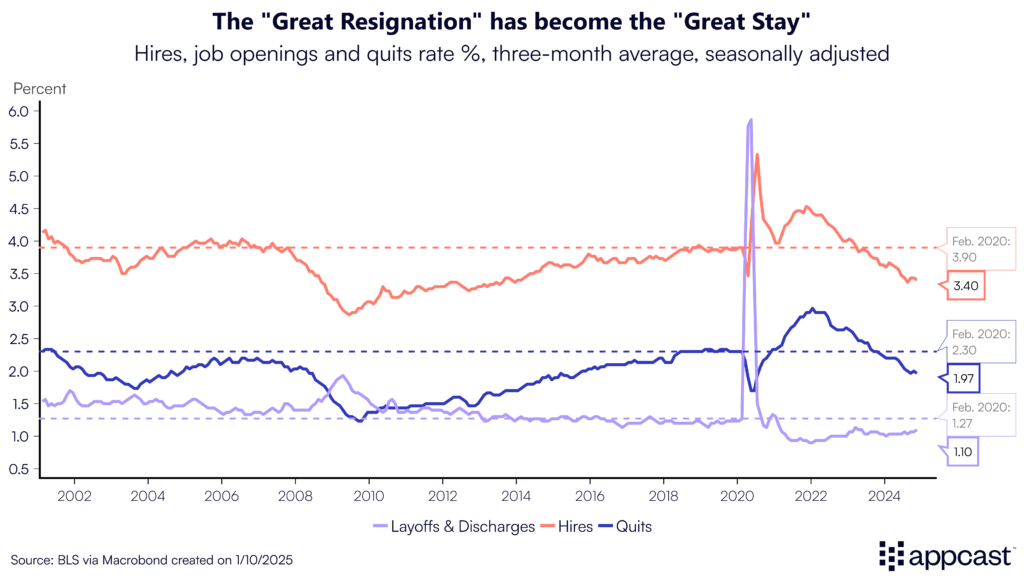
What does 2025 hold?
As the Biden administration approaches its final days, labor market data reveals a softening in job growth from the peaks of 2022. Yet, the economy continued to add a robust 170,000 jobs on average over the past three months. Unemployment remains near historic lows, even as it has ticked up slightly in recent months.
The incoming administration is preparing to implement sweeping changes to immigration, trade and tax policy. These moves are set to influence economic dynamics well beyond 2025, particularly shaping the trajectory of inflation. Lower net immigration and the imposition of new tariffs are expected to push prices upwards, complicating the Federal Reserve’s ability to unwind its aggressive rate hikes from earlier in the decade.
If the pandemic era taught economists anything, it is the remarkable resilience of the U.S. economy. While President Trump and Congress will pursue ambitious policy goals, the broader economic engine is unlikely to stall entirely.







